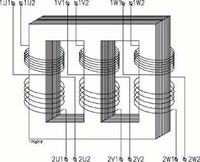Hello
I am looking for materials, diagrams, descriptions and patterns needed to change the frequency of electricity. For example, the network is 230V 50-60 Hz. How to easily change the frequency without changing the voltage.
For example, a current with a voltage of 230V 60Hz will kick you harder than a current with the same voltage and frequency of 500 Hz.
I am interested in the opinions of others who deal with electricity professionally and as a hobby on a daily basis.
https://www.youtube.com/watch?v=F2xP7TYi_R8
This gentleman's project is very interesting.
I would like to hear your opinions
I am looking for materials, diagrams, descriptions and patterns needed to change the frequency of electricity. For example, the network is 230V 50-60 Hz. How to easily change the frequency without changing the voltage.
For example, a current with a voltage of 230V 60Hz will kick you harder than a current with the same voltage and frequency of 500 Hz.
I am interested in the opinions of others who deal with electricity professionally and as a hobby on a daily basis.
https://www.youtube.com/watch?v=F2xP7TYi_R8
This gentleman's project is very interesting.
I would like to hear your opinions



